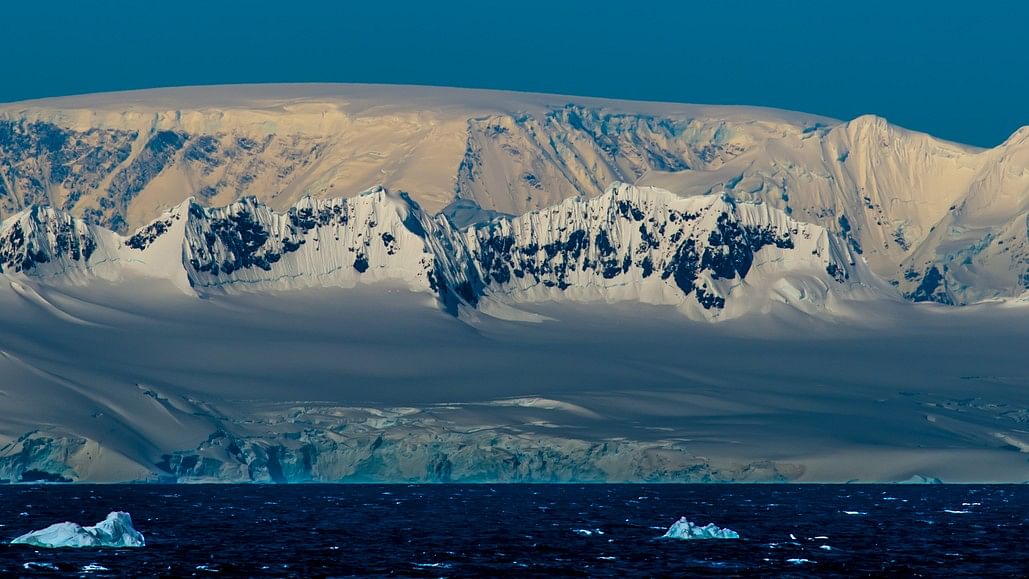
Glacier shelf floating in Antarctic. (Representative image)
Credit: iStock Photo
The vast oceans hide numerous secrets underneath its waters, that much is known. While a lot of ground is yet to be covered when it comes to ocean exploration, an unmanned submarine sent by a group of researchers at the University of Gothenburg recently discovered new anomalies on the underside of the Antarctic glacier Dotson.
With the help of sonar technology, the submarine named 'Ran' surveyed at least 1,000 kms of the ice shelf cavity and went in over 17-km into the glacier, and found tear drop-like patterns on the base of the ice shelf.
The irregular pattern included peaks, valleys and plateau-like shapes and even some sand dune formations. The longest of these shapes measured 1,300 feet.
“We have previously used satellite data and ice cores to observe how glaciers change over time. By navigating the submersible into the cavity, we were able to get high-resolution maps of the ice underside. It’s a bit like seeing the back of the moon,” Anna Wåhlin, lead author and Professor of Oceanography at the University of Gothenburg said.
Scientists believe that these shapes were formed due to water flow that in turn is influenced by the Earth's rotation. As water flows across the underside of the ice, it creates swirling currents that give rise to these patterns.
"The mapping has given us a lot of new data that we need to look at more closely. It is clear that many previous assumptions about melting of glacier undersides are falling short. Current models cannot explain the complex patterns we see. But with this method, we have a better chance of finding the answers," Wåhlin explained.
This particular ice shelf is a 50-km wide body of floating ice located in the west of Antarctica that has experienced major glacial instability, so much so that some experts have even predicted a catastrophic collapse that could raise global sea levels by as much as 11 feet.
However, despite recovering a treasure trove of data, the researchers lamented that 'Ran' disappeared after it dived beneath the ice shelf. With the likelihood of the submarine resurfacing intact being low, the researchers plan to return with a new submarine to expand on their findings.